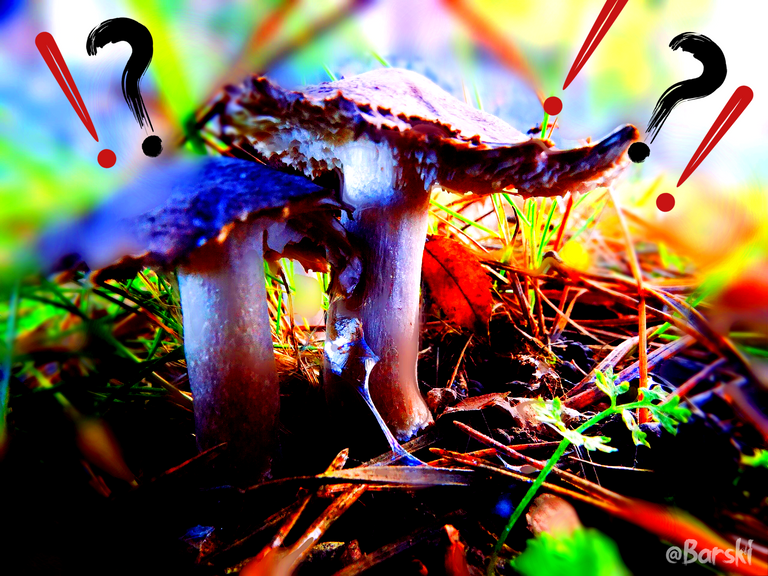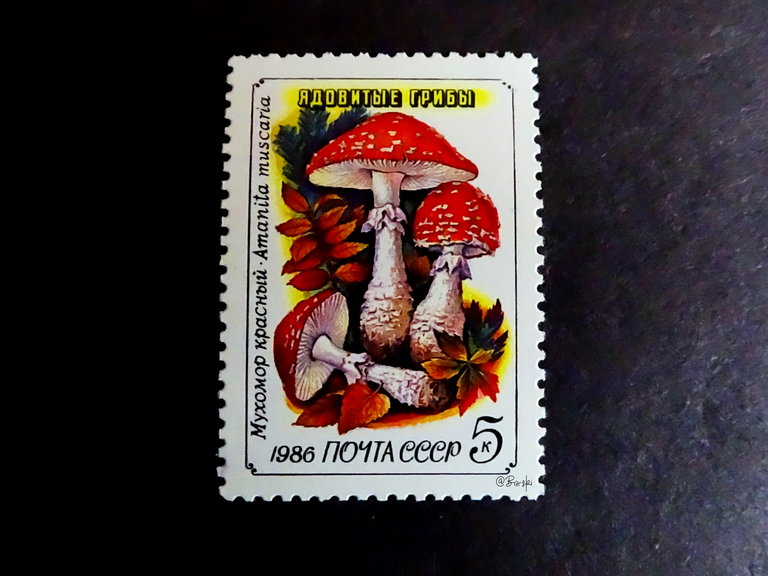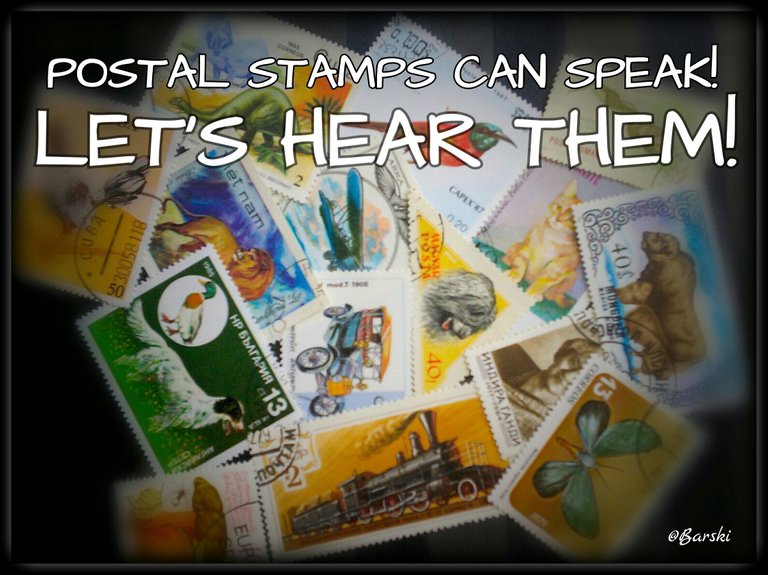Travel the World of Postage Stamps - Mushrooms (1986) - Fly agaric (Amanita muscaria) - USSR 1986 - Michel USSR 5604

Greetings friends!
There are many hobbies in the world, but regardless of the direction in which the hobbyist operates, emotionally, hobbies are similar to each other.
Whenever you find a new object, the purpose of your search, you have joyful exclamations and, quite possibly, questions that help us delve into the knowledge of the various nuances associated with your find.
So, picking mushrooms and philately are very similar to each other. You rejoice when you find a mushroom, or add a new postage stamp to your collection, and this raises a number of questions.
Yes, I must say that there is a difference, mushroom picking is associated with some danger, and philately can only cause you inconvenience if your postage stamps are covered with a layer of dust and you are allergic to dust.
The dangers that lie in wait for mushroom pickers are very insidious. Many mushrooms mutate, and poisonous mushrooms can look very similar to edible mushrooms.
Picking mushrooms should be approached with a lot of questions, paying attention to the shape of the mushroom, its color, the color of the cut of the stem of the mushroom, its smell and the place of collection.
So, some tree mushrooms, growing on deciduous trees, are edible but if they appear on coniferous trees, they can spoil your mood and upset the work of the digestive tract.

On the next postage stamp from the "Mushrooms (1986)" series, issued in the USSR in 1986, we see a dangerous, poisonous mushroom Fly agaric (Amanita muscaria).
This mushroom contains many toxic alkloids that can cause serious poisoning, hallucinations, and even death.
But, this mushroom is controversial. Rumor has it that some people eat it and it does not harm them. I do not advise you to put experiments on yourself.
Recently, you can see these mushrooms for sale on highways, and some mushroom pickers manage to export it to Canada, where, supposedly, medicinal ointments are prepared from fly agarics.
But, most likely, this is the pursuit of a hallucirogenic effect, a very dangerous game.
Yes, I understand that wild animals, in particular deer, when they are sick, they eat fly agaric, but the digestive system and metabolism of artiodactyls and humans are arranged somewhat differently.
So, the postage stamp received a face value of 5 kopecks of the USSR.
It indicates the name of the mushroom in Russian and Latin, and also, there is an indication that this mushroom is poisonous.
Information about this postage stamp:
Country: USSR.
Subject: #Mushrooms, # USSR.
Series: Mushrooms (1986).
Name: Fly agaric (Amanita muscaria).
Denomination of a postage stamp: 5 USSR kopek.
Michel's USSR catalog code: 5604.
Episode release date: May 15, 1986.
Perforation: comb 12¼ x 12.
Postage stamp size: 28 x 40 mm.
Printing technology: Offset lithography.
Circulation: 6,120,000.
Estimated price for a clean postage stamp: $ 0.11 - $ 0.24.
Estimated price for a canceled postage stamp: $ 0.03 - $ 0.23.
Photo: original from @barski collection.

To be continued!
Links to previous posts about postage stamps in this series:
Death cap (Amanita phalloides), denomination 4 USSR kopek https://peakd.com/hive-150329/@barski/travel-the-world-of-postage-stamps-mushrooms-1986-death-cap-amanita-phalloides-ussr-1986-michel-ussr-5603

Author @barski
Ukraine
For my publications, I do not use stock photographs, it is fundamentally important for me to use photographs that I have made with my own hands for publication and I can name them - authorial work.
Start your journey in the Hive by clicking on the bee.
Sign up free here! 

!BEER
View or trade
BEER.Hey @barski, here is a little bit of
BEERfrom @eii for you. Enjoy it!Learn how to earn FREE BEER each day by staking your
BEER.